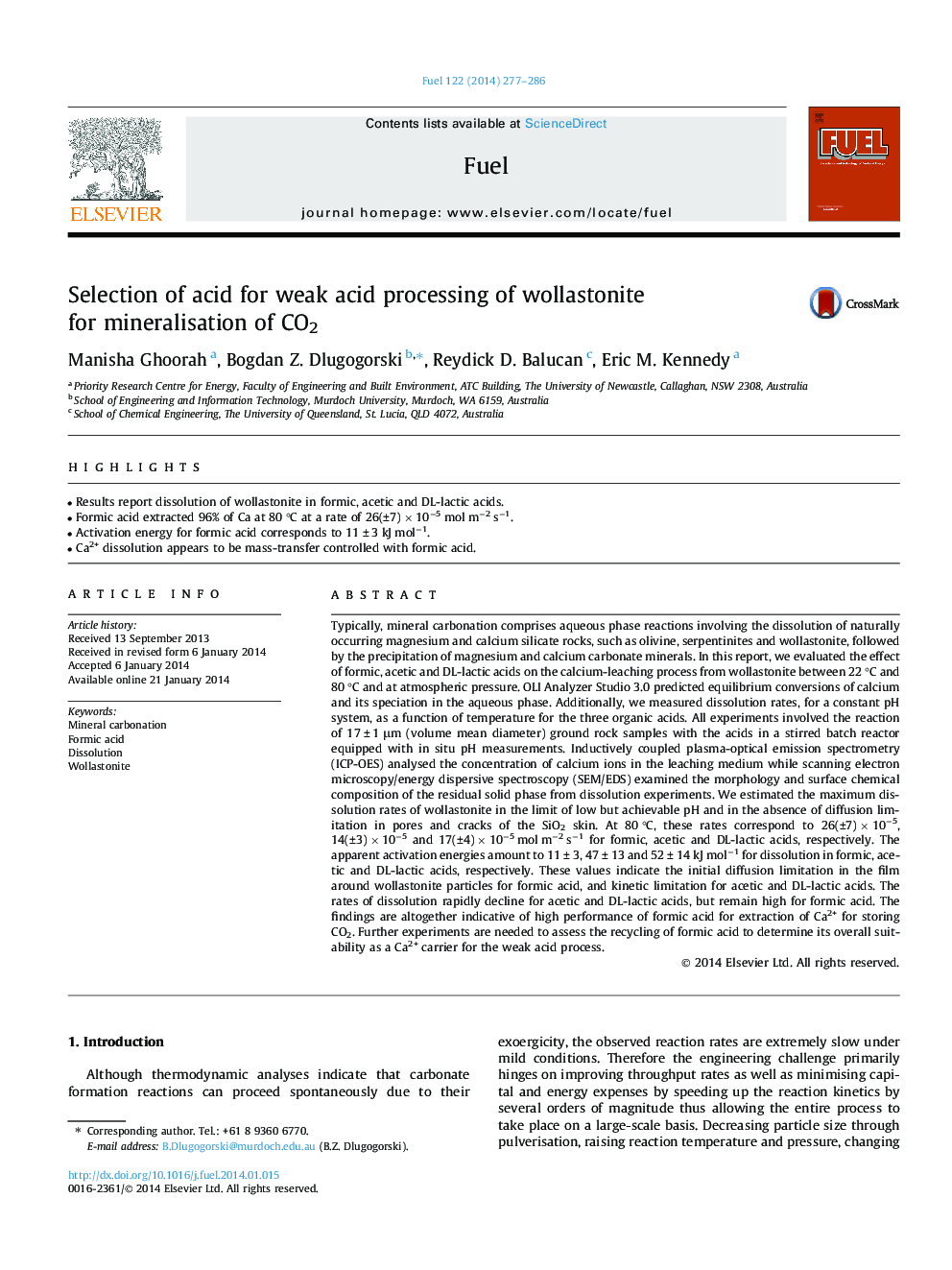| کد مقاله | کد نشریه | سال انتشار | مقاله انگلیسی | نسخه تمام متن |
|---|---|---|---|---|
| 206145 | 461142 | 2014 | 10 صفحه PDF | دانلود رایگان |

• Results report dissolution of wollastonite in formic, acetic and DL-lactic acids.
• Formic acid extracted 96% of Ca at 80 °C at a rate of 26(±7) × 10−5 mol m−2 s−1.
• Activation energy for formic acid corresponds to 11 ± 3 kJ mol−1.
• Ca2+ dissolution appears to be mass-transfer controlled with formic acid.
Typically, mineral carbonation comprises aqueous phase reactions involving the dissolution of naturally occurring magnesium and calcium silicate rocks, such as olivine, serpentinites and wollastonite, followed by the precipitation of magnesium and calcium carbonate minerals. In this report, we evaluated the effect of formic, acetic and DL-lactic acids on the calcium-leaching process from wollastonite between 22 °C and 80 °C and at atmospheric pressure. OLI Analyzer Studio 3.0 predicted equilibrium conversions of calcium and its speciation in the aqueous phase. Additionally, we measured dissolution rates, for a constant pH system, as a function of temperature for the three organic acids. All experiments involved the reaction of 17 ± 1 μm (volume mean diameter) ground rock samples with the acids in a stirred batch reactor equipped with in situ pH measurements. Inductively coupled plasma-optical emission spectrometry (ICP-OES) analysed the concentration of calcium ions in the leaching medium while scanning electron microscopy/energy dispersive spectroscopy (SEM/EDS) examined the morphology and surface chemical composition of the residual solid phase from dissolution experiments. We estimated the maximum dissolution rates of wollastonite in the limit of low but achievable pH and in the absence of diffusion limitation in pores and cracks of the SiO2 skin. At 80 °C, these rates correspond to 26(±7) × 10−5, 14(±3) × 10−5 and 17(±4) × 10−5 mol m−2 s−1 for formic, acetic and DL-lactic acids, respectively. The apparent activation energies amount to 11 ± 3, 47 ± 13 and 52 ± 14 kJ mol−1 for dissolution in formic, acetic and DL-lactic acids, respectively. These values indicate the initial diffusion limitation in the film around wollastonite particles for formic acid, and kinetic limitation for acetic and DL-lactic acids. The rates of dissolution rapidly decline for acetic and DL-lactic acids, but remain high for formic acid. The findings are altogether indicative of high performance of formic acid for extraction of Ca2+ for storing CO2. Further experiments are needed to assess the recycling of formic acid to determine its overall suitability as a Ca2+ carrier for the weak acid process.
Journal: Fuel - Volume 122, 15 April 2014, Pages 277–286